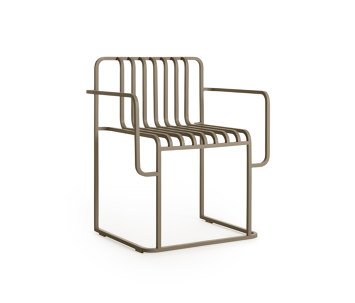7 Budget-Friendly Buys Interior Designers Say You Should Never Splurge On
As interior designers pore over fabric swatches, wallpaper repeats, and a seemingly endless number of furnishings, they are often left with one budget-busting decision: to splurge or not to splurge? In a perfect world, you’d have unlimited resources and expenses to make a client’s biggest design dreams a reality, but those cases are few and far between. In other words, it’s in your best interest to balance those bigger investments with more economical options. But between your client’s wish list and sifting through line items, it can be hard to know where it’s worthwhile to tighten the purse strings.
To help, AD PRO asked eight interior designers to share the budget-friendly items they never splurge on. From secondhand plants to reasonably priced dining room tables, these picks prove that sticking to a budget doesn’t mean you need to compromise on style. Thanks to the rise of online retailers and direct-to-consumer companies that offer decor at affordable prices, it’s easier than ever to complete your next project on trend and in the black. Now that’s priceless.
Be a part of AD’s list of approved design experts.
Rugs
Regardless of its size, material, or pile, no rug lasts forever. “[Your client is] going to spill things on it,” says Massachusetts-based expert Robin Gannon. “Pets may have an accident. And, at some point, it will inevitably need to be replaced.” Even if a space remains accident-free, she says a rug’s plush texture will “break down” over time.
Gannon’s not the only designer who’s ready to cut costs on rugs. “I strongly believe natural fiber rugs are something that people should never splurge on,” says AD PRO Directory listee Ariel Okin. “They are meant to be affordable, even when custom-sized!” For rugs that only look expensive, Gannon recommends online retailers like Bed Bath & Beyond and Rugs.com.
Paint
Whether you opt for a goes-with-anything neutral or an earthy green, a fresh coat of paint can completely change a room’s atmosphere. That said, it shouldn’t be the largest line item in your budget. “When we are being thoughtful about spending on a project, paint does not have to be the place where one spends,” explains AD100 designer Alexis Brown. “Especially when you are talking about trim, windows, casings, and doors.” As exciting as it may seem to custom-mix paints for every room of the house, plenty of companies offer a happy medium between quality and cost. For example, Brown shares that she often turns to Benjamin Moore for beautiful-meets-budget-friendly colors.
Window treatments
Interior whizzes know that the right curtains or blinds can make the room—but that doesn’t mean they should cost a small fortune. That’s especially true if your client is living in a rental. “It’s unlikely that the next place [they] move to will have windows the same size as [their] current home,” says Manhattan-based designer Tara McCauley. “It doesn’t make sense to spend a lot on custom window treatments.”
Still, there are plenty of ways to give your store-bought shades a custom look. If the windows allow, McCauley recommends ordering inside mount bamboo or matchstick blinds for an “instantly tailored look.” Speaking of tailoring, getting the dimensions just right can make a huge difference. “I recently ordered some Pottery Barn curtains for a client, and then had a seamstress hem them to the correct length and sew on some higher-end decorative trim along the leading edges,” she shares. “Going ‘semi-custom’ saved my client at least $1,000 on this pair of curtains.”
High-tech integrations
Nowadays, it feels as if tech trends evolve faster than you can say, “Hey Siri,” which is exactly why Noz Nozawa is hesitant to incorporate anything too technical into her projects. “At this rate, we’ll be on USB-Z in 2026—maybe not—but I think it’s safest to skip the splurge on anything that includes a port for USB-A, C, or otherwise,” the San Francisco–based designer explains. Though furniture and lamps with built-in USB ports offer excellent convenience, they will likely need to be replaced at some point. Nozawa’s recommendation? “Opt for the versions with standard outlets.”
Cabinet hardware
The devil might be in the details, but those smaller touches shouldn’t wreak havoc on your bottom line. When working on bathrooms and kitchens, Hema Persad of Sagrada Studio loves to save on cabinet hardware. “It’s something that has a huge visual impact on your cabinets, and changing them is an easy way to update your space,” she says. “I try to keep them affordable so that I don’t feel too invested and can easily swap to something else when I’m ready for an update in a few years.”




